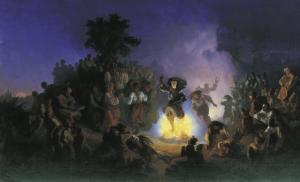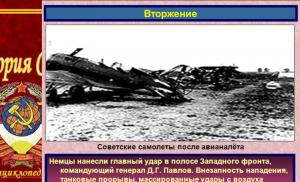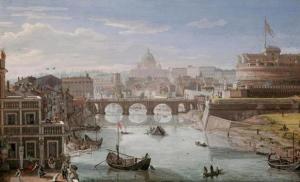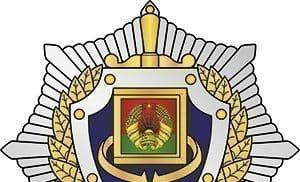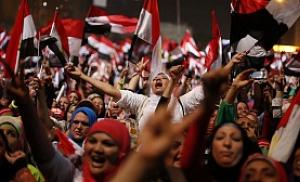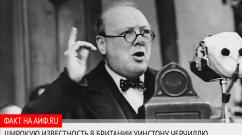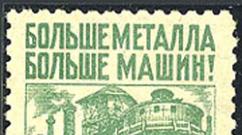Video lesson: learn English and explore space. In the outer space
A) hundreds B) millions C) billions
2. How many kilometers is an astronomical unit?
A) 150 million B) 170 million C) 180 million
3. An astronomical unit is the distance from…
A) the sun to other stars B) earth to the sun C) earth to the moon
4. How many kilometers is a light-year?
A) 7.46 trillion km B) 8.46 trillion km C) 9.46 trillion km
5. Which planet is closest to the sun?
A) Mercury B) Venus C) Mars
6. Which planet is farthest to the sun?
A) Saturn B) Uranus C) Neptune
7. How big is the Milky Way galaxy? It is about…
A) 200,000 light-years B) 150,000 light-years C) 100,000 light-years
8. The Milky Way is a ….galaxy
A) spiral B) spherical C) round
9. Proxima Centauri is a (an)…..
A) planet B) star C) asteroid
10. New stars form near the center of a …
A) solar system B) galaxy C) sun
stars
11. What is a nebula?
A) a hot ball of glowing gasses B) a cloud of dust and gas C) a dim star
12. Where do stars start life?
A) in a nebula B) in a constellation C) in a black hole
13. What does a main sequence star burn as fuel?
A) hydrogen B) oxygen C) helium
14. A supergiant might explode and become a …
A) nebula B) white dwarf C) supernova
15. What happens to a red giant at the end of its life? It shrinks and becomes…
A) a white dwarf B) a planet C) a black hole
Our solar system
16. What are comets made of?
A) rock and metal B) gasses and metal C) ice, rock and gasses
17. Asteroids are large chunks of …
A) rock and gasses B) rock and metal C) ice and metal
18. How many moons move around Jupiter?
A) about 60 B) about 30 C) about 15
19. How do comets revolve around the sun?
A) in oval orbits B) in circular orbits C) in triangular orbits
20. The largest planet in our solar system is…
A) Jupiter B) Neptune C) Earth
21. Halley's comet appears every...
A) 45 years B) 67 years C) 76 years
22. What does Halley's comet orbit?
23. A comet's glowing tail is made of...
A) metal B) gas C) ice
24. What is Jupiter's Great Red Spot?
A) a giant comet B) a giant storm C) a giant asteroid
25. Asteroids and meteoroids orbit ...
A) the sun B) the moon C) earth
Earth, the Moon, the Sun
26. How long does it take Earth to revolve once around the sun?
27. Earth rotates on its axis once every
A) 24 hours B) 336 days C) 365 days
28. The tilt of Earth's axis causes…..
A) days B) nights C) seasons
29. How many phases does the moon have?
A) 8 B) 6 C) 4
30. Who first suggested that Earth moves around the sun?
A) Galileo B) Copernicus C) Socrates
31. The part of Earth facing away from the sun has…
A) winter B) day C) night
32. The part of Earth facing the sun has…
A) night B) summer C) day
33. When the northern half of Earth tilts away from the sun, it is ……there.
A) summer B) winter C) night
34. What season is it in the USA when it is winter in South America?
A) winter B) summer C) autumn
35. An equinox happens on the first day of…
A) winter B) spring C) summer
Eclipses and Tides
- The ocean water rises during ….
A) high tide B) low tide C) eclipses
37. A …happens when the moon passes between the sun and Earth
A) lunar eclipse B) solar eclipse C) neaptide
38. The sun, the moon and Earth line up during ….
A) a full moon B) a third-quarter moon C) neap tide
39. In a total solar eclipse, people on Earth see a glow around …
A) the sun B) earth C) the moon
40. Tides make sea levels…
A) block sunlight B) rise and fall C) cause shadows
space exploration
41. When did scientists first build telescopes?
A) in the 17th century B) in the 18th century C) in the 19th century
42. Satellites can send ….to and from Earth
A) booster rockets B) launchpads C) radio waves
43. When did the USSR launch the first satellite called “Sputnik”?
A) in 1957 B) in 1968 C) in 1958
44. Who was the first person to orbit Earth?
A) Yuri Gagarin B) Neil Armstrong C) Buzz Aldrin
45. When did John Glenn orbit Earth?
A) in 1965 B) in 1962 C) in 1964
46. Who was the first animal in space?
A) Laika the dog B) Strelka the dog C) Vaska the cat
47. When did Apollo11 astronauts walk on the moon?
A) in 1966 B) in 1969 C) in 1967
48. Who launched the first liquid fueled rocket in 1926?
A) J. Glenn B) P. Vinogradov C) R. Goddard
49. When did the US Space Shuttle make its first flight?
A) in 1981 B) in 1982 C) in 1983
50. When was the Hubble telescope launched?
A) in 1889 B) in 1990 C) in 1991
Preview:
To use the preview of presentations, create a Google account (account) and sign in: https://accounts.google.com
Slides captions:
Space Stars Our Solar System Eclipses and Tides Earth, The Moon, the Sun Space Exploration
space 1 2 3 4 5 6 7 8 9 10
1.How many galaxies are there in the universe? hundreds B) millions C) billions
2. How many kilometers is an astronomical unit? A) 150 million B) 170 million C) 180 million
3. An astronomical unit is the distance from… the sun to other stars B) Earth to the sun C) Earth to the moon
4.How many kilometers is a light-year? 7.46 trillion km B) 8.46 trillion km C) 9.46 trillion km
5. Which planet is closest to the sun? Mercury B) Venus C) Mars
6. Which planet is farthest to the sun? Saturn B) Uranus C) Neptune
7. How big is the Milky Way galaxy? It is about … 200,000 light-years B) 150,000 light-years C) 100,000 light-years
8. The Milky Way is a ….galaxy spiral B) spherical C) round
9. Proxima Centauri is a (an)….. planet B) star C) asteroid
10. New stars form near the center of a … solar system B) galaxy C) sun
1.What is a nebula? a hot ball of glowing gasses B) a cloud of dust and gas C) a dim star
2. Where do stars start life? A) in a nebula B) in a constellation C) in a black hole
3.What does a main sequence star burn as fuel? A) hydrogen B) oxygen C) helium
4. A supergiant might explode and become a … nebula B) white dwarf C) supernova
5. What happens to a red giant at the end of its life? It shrinks and becomes … a white dwarf B) a planet C) a black hole
Eclipses and Tides 1 2 3 4 5
1.The ocean water rises during …. high tide B) low tide C) eclipses
2.A …happens when the moon passes between the sun and Earth A) lunar eclipse B) solar eclipse C) neap tide
3.The sun, the moon and Earth line up during …. a full moon B) a third-quarter moon C) neap tide
4. In a total solar eclipse, people on Earth see a glow around … A) the sun B) Earth C) the moon
5. Tides make sea levels … A) block sunlight B) rise and fall C) cause shadows
Our Solar System 1 2 3 4 5 6 7 8 9 10
What are comets made of? rock and metal B) gasses and metal C) ice, rock and gasses
2. Asteroids are large chunks of … A) rock and gasses B) rock and metal C) ice and metal
3 . How many moons move around Jupiter? A) about 60 B) about 30 C) about 15
4. How do comets revolve around the sun? A) in oval orbits B) in circular orbits C) in triangular orbits
5. The largest planet in our solar system is… A) Jupiter B) Neptune C) Earth
6. Halley’s comet appears every … 45 years 67 years C) 76 years
7. What does Halley's comet orbit? the sun B) Earth C) the moon
8. A comet's glowing tail is made of … metal B) gas C) ice
9. What is Jupiter's Great Red Spot? a giant comet B) a giant storm C) a giant asteroid
1 0. Asteroids and meteoroids orbit … the sun B) the moon C) Earth
1 2 3 4 5 6 7 8 9 10 Earth, the Moon, the Sun
1. How long does it take Earth to revolve once around the sun ? 24 hours B) 336 days C) 365 days
2. Earth rotates on its axis once every ? 24 hours B) 336 days C) 365 days
3. The tilt of Earth's axis causes…..? days B) nights C) seasons
4. How many phases does the moon have? 8 B) 6 C) 4
5. Who first suggested that Earth moves around the sun? Galileo B) Copernicus C) Socrates
6.The part of Earth facing away from the sun has … winter B) day C) night
7. The part of Earth facing the sun has … night B) summer C) day
eight . When the northern half of Earth tilts away from the sun, it is……there. A) summer B) winter C) night
9. What season is it in the USA when it is winter in South America? winter B) summer C) autumn
10. An equinox happens on the first day of… winter B) spring C) summer
Space Exploration 1 2 3 4 5 6 7 8 9 10
1. When did scientists first build telescopes? in the 17th century B) in the 18th century C) in the 19th century
2. Satellites can send ….to and from Earth booster rockets launchpads C) radio waves
3. When did the USSR launch the first satellite called “Sputnik”? A) in 1957 B) in 1968 C) in 1958
4. Who was the first person to orbit Earth? Yuri Gagarin B) Neil Armstrong C) Buzz Aldrin
5. When did John Glenn orbit Earth? in 1965 B) in 1962 C) in 1964
6. Who was the first animal in space? Laika the dog B) Strelka the dog C) Vaska the cat
7. When did Apollo11 astronauts walk on the Moon? in 1966 B) in 1969 C) in 1967
8. Who launched the first liquid fueled rocket in 1926? J. Glenn B) P. Vinogradov C) R. Goddard
9. When did the US Space Shuttle make its first flight? in 1981 B) in 1982 C) in 1983
10. When was the Hubble telescope launched? in 1889 B) in 1990 C) in 1991
Space has always attracted man with its incomprehensibility, mystery and inaccessibility. Knowledge about it has been accumulating for hundreds, if not thousands of years, and only in the 20th century did scientists make a significant breakthrough in the field of space exploration and exploration. Today, humanity is seriously thinking about life outside of our planet, and we thought that a video on the relevant topic would be interesting and useful for you.
From the video you will learn about the possibility of colonizing other planets and creating separate settlements outside the territory of the Earth, you will be able to practice listening, and also replenish your vocabulary.
This material is designed for learners of English with a level and above.
To get started, read the instructions on how to use this article so that it brings the greatest effect.

How and where to colonize space - how and where to colonize space
| Text | Phrases |
|---|---|
| Hi! I'm Joe Strout. I have two boys, 10 and 14 years old, and three of us have been working for the last year or so on a video game about space settlement. But it's not just a game. In fact, it's the most detailed and accurate space colony simulation program that has ever been made. | and space settlement is a space settlement detailed - detailed accurate - accurate, thorough and space colony - space colony, settlement and simulation program - simulation program |
| We simulate everything from gravity, radiation, and rotational dynamics down to individual buildings and traffic paths for the people inside. All this is quite a lot of work as you can imagine. But we feel it's important. For my part, I'd say it's the most important project I've ever worked on. I'd like to share with you some of the big ideas behind it and why it matters so much. | a traffic path it matters - it matters, it matters |
| In the early days of space exploration things proceeded very rapidly. Twelve years from Sputnik to the first moon landing. People assumed this pace of change would continue and we would soon be moving into space in large numbers. So researchers looked carefully whether the best site for a growing society is Earth, the Moon, Mars, some other planet or somewhere else entirely. | space exploration - space exploration to proceed - occur, develop, unfold rapidly - quickly, rapidly Moon landing - landing on the moon to assume - assume, assume pace - pace, speed a researcher and site - a place, a platform somewhere else entirely /ɪnˈtaɪəlɪ/ - in a completely different place |
| Surprisingly, they found the answer to be inescapable: the best site is somewhere else entirely. Researchers concluded that the best place for humanity to live in space isn't on the surface of any planet or Moon, but rather in free-floating orbital space colonies. Numerous papers were written and studies were done working out the details. This was just before the Space Shuttle, which was expected to dramatically lower the cost to orbit. The cost analysis showed that we could have orbital cities of tens of thousands of people, perhaps by 1995 or so. | inescapable - inevitable, inevitable to conclude - draw a conclusion humanity - humanity on the surface - on the surface numerous - numerous to work out - calculate, work out, understand drastically lower the cost - significantly reduce the cost an orbit - orbit tens of thousands - tens of thousands |
| well, obviously that didn't happen. The shuttle program turned out to be quite a bit more expensive than expected, and funding for the space program was reduced. Also the energy crisis of the 1970s temporarily abated, reducing the need to look for clean, cheap energy sources such as space-based solar power. so we retreated to low Earth orbit going around in circles for more than three decades. | obviously - obviously to turn out - find out, turn out funding - financing to be reduced - to be reduced, reduced to abat temporarily - temporarily decrease, decrease; go into decline an energy source - energy source space-based solar power - space solar power plant to retreat /rɪˈtriːt/ - refuse, retreat a decade - decade |
| But now things are changing again. private enterprises are entering the space business in an aggressive way with ventures like SpaceX reducing the cost to orbit down to the sort of levels we were expecting in the 70s. Virgin Galactic is preparing to make routine passenger flights to the edge of space. Bigelow Aerospace has tested private inflatable space stations, and several companies are now seriously proposing to mine near-Earth asteroids. So amidst all this renewed activity, people are starting to think again about colonizing space. | a private enterprise - a private enterprise and venture - a gamble, a risky venture or undertaking an edge - edge inflatable - inflatable to propose - offer to mine - blow up amidst - in conditions, among |
| But what destinations do people think about? The top of the list is, as always, Mars. Mars holds fascination for us, and it has been a target of colonization dreams since the early days of space exploration. | a destination - destination fascination /fæsɪˈneɪʃn/ - attractiveness, captivating a target - the target since /sɪns/ - from the moment when |
| Next up is the Moon, which has the unique advantage of being only a few days away all the time. A few thinkers have considered Venus, which might support floating cities at just the right level in the atmosphere to have Earth-like temperatures and pressures. And then, so far down on the list, that most people don't even give it any thought, orbital space colonies. So let's talk about those. How do they work? And should we be giving them more attention? | a few - a little, a few to consider - consider, consider a floating city - floating (soaring) city pressure - pressure to give some (any) thought - seriously think |
| First, let's look at gravity. We know that one Earth's gravity, like what we're all sitting in right now, is good for us. And we know from years of living board space stations that zero gravity is not healthy for us. It causes bones and muscles to weaken, immune deficiency, heart problems, and increased risk of things like kidney stones. | gravity - gravity, attraction aboard - on board to cause - cause, be the cause to weaken - weaken immune deficiency - immunodeficiency an increased risk - increased risk a kidney stone - kidney stone |
| But what do we know about intermediate levels of gravity, like the 1/3 G on Mars, or the 1/6 G on the Moon? Well, here is what we know: nothing. Nobody has ever lived at any intermediate level of gravity for more than a few days, so we just don't know the effects of these G levels, even on adults. Much less children who are likely to be more susceptible to developmental problems. | intermediate - intermediate, average an adult - adult susceptible /səˈseptəbl/ - receptive, sensitive a developmental problem - a developmental problem |
| This is a big problem for planetary colonies, because you can't get Earth-like gravity anywhere except earth and possibly Venus. But without children you don't have a colony, you have at best an outpost. | except - except possibly - possibly at best - at best an outpost - remote settlement, representative office, outpost |
| Orbital space colonies produce pseudo gravity through rotation, just like amusement park rides some of you may have tried. The larger the radius of rotation is, the slower it can spin and still produce an Earth-like gravity. A one-kilometer colony, for example, only needs to spin 1.3 times each minute to produce one Earth's gravity. | pseudo /ˈsjuːdəʊ/ - pseudo rotation - rotation an amusement park ride - an attraction in an amusement park to spin - spin, rotate each - each |
| Of course, if we discover that less gravity is acceptable, then we can either build smaller or spin slower. In fact, one cool thing about an orbital colony is that you can have multiple, different levels of gravity at the same time. Higher decks closer to the spin axes have proportionately less gravity. So maybe if we'll find that elderly or injured patients are safer at 1/2 G, they can just stay on a higher deck. | to discover - discover acceptable - acceptable either ... or ... - or ... or ... multiple - numerous a deck - deck, platform a spin ax - axis of rotation the elderly an injured patient - injured / injured patient |
| And in the center, you can have zero gravity sports and recreation, and still be at home in time for dinner. | recreation - recreation, entertainment |
| OK, let's talk about radiation. Free space is filled with radiation from the Sun, and much harder radiation in the form of cosmic rays which stream in from all directions. Here on Earth we're protected largely by the Earth's magnetic field, and secondarily by the tons of air above our heads. Mars, Venus and the Moon have no significant magnetic fields. And apart from Venus, not much atmosphere either. So every time you step outside there, you're dosing yourself with radiation. You'd have to stay underground most of the time to avoid problems like cataracts cancer and infertility. | free space - free space be filled with - to be filled with something a cosmic ray - cosmic radiation, beam to stream in - pour in a direction - the direction a magnetic field significant - significant, important to step outside - go out to avoid - to avoid cancer - cancer (disease) infertility - infertility |
| Orbital space colonies are built outside-in. We're going to need a few meters of soil beneath our feet anyway to support a robust biosphere. And that alone provides substantial shielding against space radiation. | outside-in - inside out soil beneath /bɪˈniːθ/ our feet - soil under our feet robust - strong, durable substantial shielding /ˈʃiːldɪŋ/ - enhanced protection |
| In fact, a colony in a low Earth orbit would have less radiation inside than we experience here on Earth. Outside of Earth’s magnetic field some additional shielding might be necessary, but it’s still nicer to have that beneath your feet than over your head. | to experience - feel, experience |
| I'm going touch only briefly upon the day/night cycle. Obviously, we evolved with the 24-hour day. The Martian day is very similar: 24.6 hours, and this may be a part of our fascination with Mars. A space colony would have exactly the day length that you want, most likely, matching Earth's. Daylight would either be sunshine, reflected into the habitat through shield mirrors, or artificial lighting, but so far overhead that it produces an outdoorsy daytime feel. | to touch upon - touch, mention to evolve - develop matching - matching daylight - daylight reflected - reflected a habitat - habitat, place of residence an outdoorsy daytime feel - the feeling of being outdoors during the daytime |
| So you can probably tell by now that I see a lot of advantages to orbital colonies. as soon as you let go of the assumption that we need a planetary surface to live on, you quickly come to the conclusion that orbital space colonies are the best place to be. In short, we can do better than Mars. | as soon as - as soon as to let go - let go an assumption to come to the conclusion - come to a conclusion |
| This is why my sons and I are building our game which we called “High Frontier". We have built it to be as accurate as possible: the physics, radiation levels, ecology and everything else is based on real science. So players of the game aren't just playing, they're exploring the vast design space and finding solutions that might actually work. | a frontier /ˈfrʌntɪə/ - border, frontier to be based on - to be based on science - science vast - extensive a solution - a solution, a way out of a situation |
| At the very least, they're learning about an alternative to planetary colonies. And we hope that some day some of those smart, educated players might help to make it actually happen. When it does, it might unfold something like this. The little green dots you see here represent orbital space colonies. Each one is home to anywhere from 10 thousand to 10 million men, women and children. | at the very least - at least to unfold - unfold, occur a dot - dot to represent - represent |
| BUT recent work based in part upon “High Frontier” has shown its best to begin in low Earth orbit, within the Earth's magnetic field. But we'll expand from there to higher Earth orbits, and then orbits near the Moon. After that, colonies around Mars might make sense with its two moons providing materials. | recent - recent, extreme within - within to expand - expand to make sense - to make sense |
| From there we'll expand into the Asteroid Belt with an estimated billion or so objects, at least 100 meters in diameter, which may not sound like much, but a 100-meter asteroid weights about 10 million metric tons. In fact, experts estimate that there is enough material in the main Asteroid Belt alone to build space colonies with the combined area of 3000 times the living land area of Earth. | the Asteroid Belt - asteroid belt estimated - installed a billion - a billion to weigh - weigh enough - enough a livable land area - land area suitable for life |
| And then there are more asteroids in Jupiter's orbit, and of course the Jovian System which has dozens of minor moons and rings massing about 10 billion tons. | the Jovian System - Jupiterian (ring) system a dozen /dʌzn/ - a dozen minor /ˈmaɪnə/ - smaller, minor massing - with mass |
| After that we'll move to the Saturn System which has similar resources. Just think of the view you would have out of the windows there! | to move - (pro) move a view - view |
| And then forward to Uranus and Neptune. And then the Kuiper Belt, with an estimated 70 thousand dwarf planets out in the cold and dark. | onward - further, forward the Kuiper Belt a dwarf planet - dwarf planet |
| The Solar System is vastly larger and richer than most people realize. It's full of exactly the materials and energy that we need. And remember, unlike past human migrations, there are no ecosystems here, no natives that will be displaced; these are sterile chunks of ice and rock just waiting for us to bring warmth, and light, and life. | the Solar System - Solar system to realize - realize, understand a native - a local resident to be displaced - to displace, to be moved a chunk of rock - a piece of stone |
| This greening of the Solar System, turning dead chunks of rock into millions of inside out worlds full of trees, and birds, and bugs, and people. This is the bright future I see for us. And it all starts here: smart, enthusiastic kids are playing a video game where they get to decide how and where to build space colonies, how to run them when they are built, how to balance the ecosystem, manage resources and budgets, and educate each generation. That's why we're building “High Frontier” and that's why it's not just a game. | greening - landscaping, ecologization inside out - turned inside out and bug is a beetle enthusiastic - enthusiastic, motivated to run - manage and generation - generation |
Grammar Minute
As you probably noticed, the video presents various grammatical tenses, we will dwell on the tenses of the Perfect group in more detail: Present Perfect and present Perfect Continuous.
Let's start with the fact that in these tenses we use the auxiliary verb have/has. For the Present Perfect time, we take the 3rd form (Past Participle) as the main verb, if it is irregular (irregular), and add the ending -ed to the regular verb (regular).
We have built it to be as accurate as possible. - We developed it so that it (the game) is as accurate as possible.
Bigelow Aerospace has tested private inflatable space stations. - Bigelow Aerospace Company tested private inflatable orbital stations.
We use the Present Perfect to indicate an action that has already taken place, completed, the result of which has a meaning or consequences in the present.
BUT recent work based in part upon “High Frontier” has shown its best to begin in low Earth orbit. - Recent a work based in part on the game High Frontier, showed which is best to start in low Earth orbit.
Nobody has ever lived at any intermediate level of gravity for more than a few days. - Nobody never not lived with an average gravity level of more than a few days.
Pay attention to the words recent (recent) and ever (ever). They indicate the relevance and effectiveness of information to date.
Finally, we offer to pass a small test on the studied vocabulary and grammar.
Test on the topic "Video lesson: learn English and explore space"
We also compiled a file with new vocabulary from our article. You can download it from the link below.
(*.pdf, 318 Kb)
We hope this lesson was useful to you, you replenished your vocabulary, repeated grammar and received a portion of cognitive information. Explore space using English!
Then we did the craft.
We painted a large plastic bottle (this is the body) and 4 rolls of toilet paper (boosters) with silver gouache. When everything was dry glued boosters to the body.
The nose cone was made from a sheet of paper, rolled into a cone (almost like a bag) and also glued on top of the body. It would also be possible to cut red-orange strips of paper and glue to the bottom of the rocket, as if fire flies out, but I was afraid that it would take a long time. And so everyone was very satisfied with both the process and the result.
Physical training
In the process of making a rocket, while waiting for the paint to dry, we did physical exercises. After all, the weak are not taken into space! In general, the children had a great exercise, at the same time they repeated sports vocabulary - push-ups, pull-ups, press exercises, squats, etc.
When the rocket was ready, we started preparing food supplies. I told the guys that in space there is weightlessness and everything will fly, and the liquid generally turns into bubble balls. Therefore, all food should be convenient for use in space. I said that food and drinks are usually in tubes so that it is convenient to eat. We discussed what it could be and in what form, and I suggested that the children make a menu.
We store food
Previously, I pasted over several tubes that I found at home (from toothpaste, ointments, etc.) with masking tape (you can just use paper). And the children themselves volunteered to sign them, as a result we got a chic menu:

My proposal to sign at least one tube with something more nutritious, for example, “soup”, did not find support and was rejected.
We also discussed that bread and all sorts of livers, probably, should not be taken, otherwise the crumbs will fly all over the rocket.
We make a spacesuit
Now we only had to prepare the appropriate clothing - a spacesuit. We took a roll of foil and wrapped it around the smallest member of the team, including the legs. It was a lot of fun and, at the same time, all body parts and movements were repeated: lift your leg, lower your arm, etc.
When we unpacked our little astronaut from foil (I must say right away that the design is disposable and hot), the children began to crumple the foil into balls, as a result of which a spontaneous idea was born to arrange a battle with mars stones (similar to moon rocks - mars ice rocks - ice stones It's very cold on Mars. We divided into 2 teams, divided the silver balls and built ourselves a defense out of chairs. Well, they just threw these balls at each other, like snowballs. It seems that everything is so simple, but the children really liked it and they had plenty of fun!
I conducted this quiz in all classes from 7 to 11 and aroused interest everywhere. I was surprised that children are so interested and know so much. The quiz is animated so that the correct answer will appear with a click.
View document content
"Quiz" Cosmos "in English"
SPACE QUIZ
Zhilina Larisa Iliyasovna, LND

The gravity on Mars is less than _______ per cent of that on Earth.

The Sun is __________ years old.
3.5 billion
4.5 billion
6 billion

A hurricane the size of Earth has been raging on ________ for the past 300 years.

The exploding star is known as a ________ and produces as much energy in a few months as the sun would over billions of years.
supernova

The three main types of _________ are made of stone, iron or a mixture of the two.
meteorite

________ meteors enter the Earth's atmosphere every day! Luckily most of them are only the size of a grain of sand.
1.5 billion
one billion
one million
5 million
2 million
20 million

Light is the fastest thing in the universe and travels at more than ____________per second.
112.000 miles
300.000 km
250.000 km
155.000 miles
180.000 km
180.000 miles

It takes one day for the Earth to rotate once on its axis. How long exactly does it last?
23 hours and 56 minutes

The daytime temperature on Mercury is about _______ degrees Celsius.

It takes Saturn more than ______ years to orbit the Sun.

How is the earthquake on the moon called?
moonquake

_______ was called the Georgian Planet, after king George III.

The Earth is traveling through space at an astonishing speed ________kilometres per hour.

_______ is shrouded in clouds of sulfur dioxide and sulfuric acid.

The biggest stars in the galaxy are called ______ and ______. A red _____ can be 1,500 times bigger than the Sun!
supergiants
hypergiants

Skirdina O.V.
Class:
8 "A" class
Lesson Objectives:
Educational aspect
broadening the general horizons of students.
educational aspect
education of the need for the practical use of the English language, love and respect for the achievements of domestic science.
Developmental aspect
development of memory and ability to perceive the studied vocabulary; the formation of interest in the study of space, in the structure of the solar system, in the achievements and development of the space industry and astronomy.
Educational aspect
the formation of lexical and grammatical reading skills, the use of grammatical tenses (Present Perfect and Present Perfect Continuous); listening and speaking and writing on the topic under study, improving the possession of monologue and dialogic speech on the topic "Space" expanding the knowledge and understanding of students on the topic "Space».
Lesson objectives:
Practice language skills;
Train in use in speech and in understanding vocabulary on the topic "Development of astronautics. Planets of the solar system";
To form students' interest in learning English;
To cultivate a patriotic attitude towards the Motherland (focusing on the merits of the Soviet and Russian cosmonautics before world science and technology).
Lesson type:
Combined lesson
Used textbooks and tutorials:
BiboletovaM. W. Enjoy English-8
Used equipment:
a computer, a multimedia projector, an exposition screen, a picture on a blackboard depicting the planet Earth and famous astronauts; task cards for captains and teams; schemes for constructing sentences in Present Perfect and Present Perfect Continuous, asterisks, space music.
Used CORs:
multimedia presentation
During the classes
Organizing time
Good morning students! We are glad to see you! We have an unusual lesson today. I invite you to take part in “A Mystery Travel” through space.Do you agree to join me in this journey?
The teacher welcomes the students and invites them to go on a space journey, introduces them to the flight route through space stations - the stages of the lesson. Students are introduced to the rules of the game. The class is divided into 2 teams. Each team chooses a captain. Each task is rated with a certain number of stars. The team with the most stars will be the winner.
First of all Let's revise the words on the topic “Space”.(for warm-up, warm-up)
The teacher draws a diagram, the guys name the words (associations that the cat has with the word “Space”).
We see you are ready for our competition. Today we are going to fly round the Earth and to visit different space stations: “Space-Words”,"Scrabble", “Planets”,
The Solar System,"Competition of Captains""Historical Discourse", "Guessing Words".
- We "ve got much work to do today. We"ll remember some facts from the history of space exploration, you"ll tell us what you know about planets of Solar System, you are going to do some exercises and of course we"ll learn much interesting.
- Let's begin! 5, 4, 3, 2, 1. Start! (space music playing)
II. Main part of the lesson
Competition " Space -Words”
- You should match the words and transcriptions.
Mercury
Uranus
Jupiter
Venus
Neptune
Earth
Saturn
Mars
[ "saetən]
[ ]
[ ɝ θ ]
[ "juər(ə)nəs]
[ "neptjuːn]
[ ma: z]
2. Competition "Scrabble"
You must guess some words. But the letters have mixed. Make up the words putting these letters in the right order.For each word you can get a star.
The teacher invites students to guess the words, the letters of which are mixed up.
encrypted words:
exploration, galaxy, telescope, universe, planet, satellite, launch, atmosphere, star, astronaut, spacesuit, research, problem, spaceman
Competition « planets » - “Planets”
Now let "s see how well you know the planets of the solar system. We are going to see the presentation. There are many riddles. Which team will answer more questions - the winner in this part of the competition.
Crews answer 5 questions in turn (presentation).
reddish sky above
The vast canyon
The fourth planet
The huge volcano
Named for the god of war (Mars)
most windy
Rings and moons
Takes 160 to go round the sun(Neptune)
The farthest planet
Strange orbit
Sometimes it's closer to the sun (Pluto)
Spins at an angle
Pale blue-green cloudy atmosphere
15 moons and two rings
42 years of sunshine
42 years of darkness(Uranus)
The hottest planet
Volcanoes
Named after the god of truth and justice (Venus)
The large bright object in the sky that gives us light and heat, and around which the Earth moves (The Sun)
The planet that we live on (Earth)
A machine that has been sent into space (a satellite)
The round object that you can see shining in the sky at night (the Moon)
The Solar System
Let's go to the Solar System and put the planets in the correct order to the Sun.
You have the cards with planets. Let's imagine that you each of you are a planet. You should arrange in a row such a way, as the planets are from the sun, keeping the cards in your hands. Which team will be the first – the winner of this part.
This task is performed by the participants, where it is necessary to place the names of the planets faster than the other crew in the order in which they move around the Sun. Participants line up in the order in which the planets are located in relation to the Sun, holding cards in their hands.
Competition captains - “Competition of Captains”
Now I want the captains of our teams to work in outer space.
You will get cards. You must explain the following facts using Present Perfect or Present Perfect Continuous
The teacher invites the team captains to go out into outer space and complete the task separately from the team, which at that time will be busy with other work.
The captains will have to explain some facts using the verbs in the correct tense (see appendix no. 1).
Other members of the teams also get cards. You must choose the correct form of the verb.
Teams need to choose the correct forms of verbs and insert them into sentences (see Appendix No. 2).
Readiness for work is preliminarily checked - knowledge of the rules for using and constructing sentences in Present Perfect and Present Perfect Continuous. The teacher proposes to evaluate both competitions by the jury, the maximum score is 5 stars.
6. Competition "Historical Discourse"
When was the first man's flight to the open space? (12.04.1961)
What country was the first to send a man to thespace? (The USSR)
What's the first man's name who had been in space ? (Y.Gagarin)
How is the first space rocket of the USSR called?(Vostok)
Name the cosmodrome, the spacecraft started from.(Baikonur)
What's her name? It's a woman who was the first among the women to have a flight to the space. (V.Tereshkova)
Who and when made the first going out to the open space ? (A. Leonov)
7. Puzzle Guessing Words
- The last task is the wordsearch. And we will count the points.
III. Summarizing
That's all for today.You have worked during the lesson very well. Thank you for your work. Now it's time to finish our work and to come back home. It is interesting to know who the winner today is. Let's clap our hands! Congratulations! The lesson is over. good bye.
The teacher thanks the children for their work, summarizes the results of the competition and congratulates the winners.
_____________
_____________
